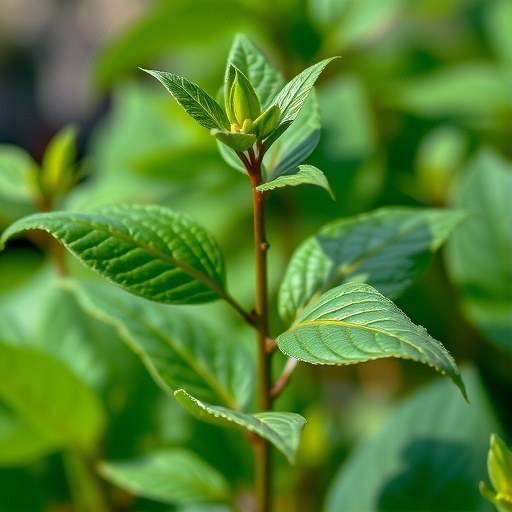HIV, the virus that causes AIDS, has a secret life. Though anti-retroviral therapy can reduce its numbers, the virus can hide and avoid both treatments and the body's immune response.
Researchers at UC Davis Health, together with colleagues at UC San Francisco and the University of North Carolina at Chapel Hill, have found that increased crotonylation, an epigenetic mechanism that governs gene expression, might be the key to making HIV come out of hiding and become susceptible to anti-HIV drugs. Their study is published in The Journal of Clinical Investigation.
"We have been working on mechanisms that could be used to disrupt HIV latency," said Satya Dandekar, chair of the UC Davis Department of Medical Microbiology and Immunology and senior author on the paper. "The goal is to force the virus to be expressed so it is visible to the immune system and can be targeted through immuno-therapeutics. This is the first study to identify histone crotonylation as a driver for HIV transcription and de-crotonylation of histone as an epigenetic marker for HIV silencing."
While medical science has transformed HIV/AIDS from a deadly disease to a chronic one, there are still millions of people living with the virus. HIV's ability to become dormant makes it invisible to both the immune system and treatments. Researchers have dedicated years to deciphering the mechanisms that help HIV hide and finding ways to reverse that process.
In this study, the researchers focused on histone crotonylation, an epigenetic mechanism that modifies the proteins that package DNA, affecting gene expression.
"Histone crotonylation regulates HIV latency," said UC Davis associate project scientist Guochun Jiang, first author on the paper. "If we can modulate that, the virus can be more efficiently flushed out."
To better understand this mechanism, the team focused on an enzyme called ACSS2, which plays an important role in fatty acid metabolism in the gut. HIV has often been linked to impairment of lipid metabolism, making ACSS2 a promising potential target for an HIV cure.
To test it out, the researchers studied peripheral blood samples from HIV-infected patients and several HIV latency cell models. Activating the ACSS2 enzyme increased viral transcription manifold. The results from patient samples were particularly encouraging.
"We examined well-characterized cell models of HIV latency and immune cells from HIV patients who had been undergoing antiretroviral therapy and had undetectable viral loads," Dandekar said. "In those samples, we were able to disrupt the HIV silencing by inducing histone crotonylation."
To further validate the results, the researchers treated samples with an ACSS2 inhibitor, which reduced detectable virus levels, highlighting the important role of decrotonylation in establishing HIV latency.
One of the more intriguing findings in the study was that increasing histone crotonylation works synergistically with other known anti-HIV latency molecules, such as the protein kinase C agonist PEP005 and the HDAC inhibitor vorinostat. Dandekar and her colleagues are now searching for more molecules that attack viral latency to develop an overall strategy of combining therapeutic agents to compel HIV expression.
"We are looking for synergistic disruption, by combining histone crotonylation with other mechanisms to reactivate HIV," Dandekar said. "This research positions us to screen and identify small molecules, which can be optimized to carry out HIV modification."
###
Other researchers on the study, titled "HIV Latency is Reversed by ACSS2-driven Histone Crotonylation," were Don Nguyen, Gema Méndez-Lagares, Yuyang Tang, Maher Elsheikh, George Thompson and Dennis Hartigan-O'Connor at UC Davis; Nancie Archin, Steven Yukl and David Margolis at UNC Chapel Hill; and Joseph Wong at UCSF.
More information about UC Davis Health and its Department of Medical Microbiology and Immunology is at health.ucdavis.edu.
Media Contact
Karen Finney
[email protected]
916-734-9064
@UCDavisHealth
http://www.ucdmc.ucdavis.edu
http://www.ucdmc.ucdavis.edu/publish/news/newsroom/12717
Related Journal Article
http://dx.doi.org/10.1172/JCI98071




